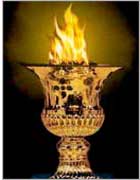Introduction to Zorastisim
Zoroastrianism is an ancient Aryan religion that originated in Persia more than 2500 years ago. Though it has relatively few adherents, less than one hundred and thirty thousand in the whole world, it is one of the oldest religions. Zoroaster was the founder of Zoroastrianism, also commonly known as Parsi-ism. It is also known as the religion of fire worshippers and Magianism.
Parsi Scriptures consist of Dasatir and Vesta or Zend-Avesta. Dasatir is further divided into two parts: Khurda Dasatir and Kalan Dasatir.
Avesta is further divided into Khurda Avesta and Kalan Avesta also known as Zend or Maha-Zend.
The religious scriptures of the Parsis are found in two languages: Pahlawi (Pahlawi script resembles the present Persian script) and Zendi. Besides these two scripts, some religious literature is found in cuneiform writing.
Some Parsis consider the Zend Avesta to be more authentic than the Dasatir while the others consider Dasatir to be more authentic.
Zend Avesta is divided into three parts:
- The first part contains Vendid.
- The second part contains Sirozahs, Yashts and Nyays.
- The third part contains Gathas, Yasha, Visparad, Afrinagan Gahs and miscellaneous.
DASATIR:
Dasatir means a book of ten parts: ‘Das’ meaning ‘ten’ and ‘tir’ meaning ‘a part’. Dasatir is also the plural of Dastur, which means law or religious code.
zoroastrianism symbol, zend avesta, parsi religion, persian religion, zoroaster definition, parsi god, r hllor, avesta, parsi, zoroaster

